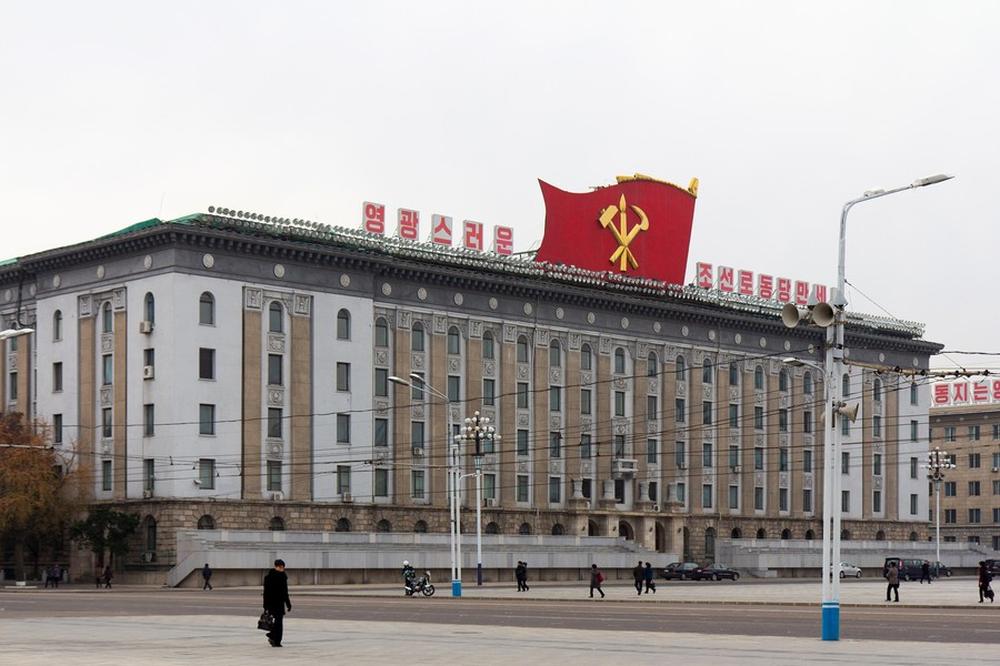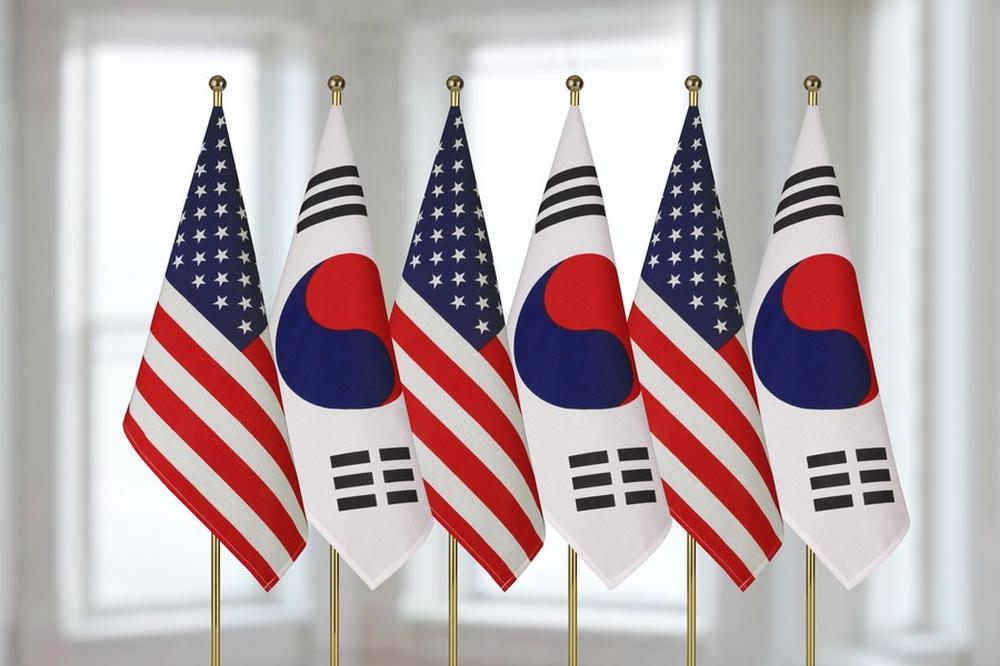- #Global Issues
- #North Korea
- #South Korea
- #US-ROK Alliance

► The ROK government has emphasized 3D (Deterrence, Dissuasion, and Dialogue/Diplomacy) within the Audacious Initiative for creating an environment "where North Korea can return to denuclearization negotiations by itself."
► It is necessary to approach this Audacious Initiative as a long-term and evolutionary policy and reinterpret dialogue and diplomacy of the 3D as driving forces to promote both deterrence and dissuasion beyond merely a consequential aspect of the enabling environment.
► This makes it necessary to expand the scope of dialogue and diplomacy to encompass not only the U.S. and key partners but also other states worldwide. Simultaneously, the ROK government should send consistent messages regarding unconditional dialogue with North Korea, both directly and indirectly, at every opportunity.
► As the situation has entered a prolonged phase, it is important that the elements of 3D are effectively combined and utilized.
On the 77th Korea’s Liberation Day, August 15, 2022, President Yoon Suk Yeol outlined the vision of the “Audacious Initiative.” In October of the same year, the Ministry of Unification released “A Denuclearized, Peaceful, and Prosperous Korean Peninsula” and provided the specific goals, guiding principles, and tasks. Notably, the government emphasized a 3D (Deterrence, Dissuasion, and Dialogue/Diplomacy) approach within the Audacious Initiative as a key mechanism for creating an environment “where North Korea can return to denuclearization negotiations by itself.”
However, North Korea has shown a negative attitude towards South Korean approach since its announcement. On August 19, 2022, Kim Yo-Jong, Vice Department Director of the Central Committee of the Workers’ Party of Korea (WPK), called South Korean proposal “a replica of the Lee Myung-bak government’s Denuclearization and Vision 3000.” She criticized that the underlying assumption of “if North Korea takes steps to denuclearize” was a false premise and emphasized its nuclear weapons as the regime’s destiny.
The denial by Pyongyang has raised questions about the effectiveness of the Audacious Initiative. For example, it is criticized that proposed measures are insufficient incentives for North Korea to decide to trade economic assistance for denuclearization steps. Furthermore, it is argued that a denuclearization-aimed proposal is limited and unrealistic to work because the North would not give up its nuclear weapons. However, most of these opinions are based on North Korean non-response to the Audacious Initiative and the question of how it could operate within the context of the unsuccessful framework, the denuclearization-economic cooperation exchange, envisioned by past South Korean governments.
Nonetheless, the Audacious Initiative distinguishes itself from the previous governments’ North Korea policies in several key ways. Firstly, it adopts a more comprehensive approach by encompassing economic, political, and military sectors, going beyond focal economic incentives of earlier policies. Moreover, this initiative places an emphasis on enhancing the “livelihoods of North Koreans.” The proposed measures at initial stage, such as the Korean Peninsula Resources for Food Exchange Program and the Pilot Projects to Improve North Korean People’s Livelihood, are designed for the prompt implementation upon North Korean decision to come to the denuclearization talks. This aspect of the proposal can be seen as bridging the gap of binary approach between coercion and inducement, and underlining South Korea’s commitment to human rights and humanitarian access to both North Korean regime and its people, and the international community. Most importantly, the proposal is literally an “initiative.” It is not a call for preconditions of North Korean denuclearization. Rather, this approach is regarded as a flexible approach, which is open to the consultation according to the North’s needs.
Over the past year, the Yoon administration has implemented various measures related to the deterrence and dissuasion of the 3D approach to create conditions for the plan. Deterrence measures have been intensified to effectively respond to North Korea’s advanced nuclear and missile capabilities, its aggressive nuclear strategy, and numerous military provocations of low and high intensity. South Korea and the U.S. resumed major joint military exercises, strengthened extended deterrence through the Washington Declaration, and activated of the ROK-U.S. Nuclear Consultative Group (NCG). South Korea’s willingness to improve bilateral relations with Japan has facilitated the trilateral security cooperation among ROK, the U.S., and Japan including sharing the real-time missile warning data system.
As for the dissuasion, primarily focusing on economic sanctions, there are challenges including continuous Chinese and Russian noncooperative stance in additional UNSC Resolutions, Chinese possible assistance to North Korea in terms of food, supplies, and labors, and the North’s strong self-reliant stance. Nevertheless, these factors do not necessarily offset the effectiveness of dissuasion, nor do they mean that it cannot be utilized as leverage. South Korean government has been strengthening cooperation with an ally and key partners to reinforce economic sanctions and block loopholes. The U.S. has taken a multifaceted approach by strengthening its own secondary sanctions, and South Korea, Japan, and the EU have also been active in implementing and extending their individual sanctions. Their individual sanctions have been more systemic and networked to support the existing sanction regime against North Korea. Simultaneously, developing new items for sanctions targeting such as North Korean illicit cyber activities including hacking cryptocurrency is continuous through public-private coordination and collaboration.
Conversely, the last piece of the 3D, “Dialogue and Diplomacy,” faces the significant hurdles in terms of progress due to diplomatic setbacks caused by a rapidly changing international strategic environment. Escalating tensions in the relationships among major powers like the U.S.-China strategic competition and strained European-Russian relations exacerbated by the Ukraine War, is creating difficult circumstances for them to prioritize and even discuss the North Korean nuclear issue. Bilateral relations with key stakeholders in the Korean Peninsula, such as North-South Korea, ROK-China, and U.S.-DPRK are experiencing difficulties as well. Above all, the absence of direct dialogue with the DPRK is the most challenging aspect of dialogue and diplomacy.
In this regard, the creation of new opportunities has become more crucial. It is necessary to approach this Audacious Initiative as a long-term and evolutionary policy and reinterpret dialogue and diplomacy of the 3D as driving forces to promote both deterrence and dissuasion beyond merely a consequential aspect of the enabling environment, as initially designed in the 3D strategy. This makes it necessary to expand the scope of dialogue and diplomacy to encompass not only the U.S. and key partners but also other states worldwide that could contribute to resolving the North Korean nuclear issue. Such an approach also acknowledges that concerns of the North Korean nuclear issue and Korean unification have already been internationalized.
The ROK government has underscored that the North Korean advanced nuclear and missile programs become existential threats in the Indo-Pacific regional security as well as a key agenda for the stability of the NPT regime. South Korean diplomatic efforts have made positive steps especially evident in sentences within agreements and statements of both bilateral and multilateral meetings. For example, , the inclusion of phrases such as the request for CVID to North Korea in the ROK-NATO joint statement in July 2023, and the support to the Audacious Initiative in the Spirit of Camp David, ROK-U.S.-Japan Joint Statement in August 2023, sends a positive signal. Expanding on this progress, the ROK government should further actively utilize its diplomatic capabilities to raise the global awareness of threat perception posed by the North. This includes drawing attention to the “North Korean questions,” including human rights issues, and emphasizing the necessity of international engagement with North Korea. A well-coordinated cooperation with key allies such as the U.S., Japan, NATO, and others is indispensable for effective deterrence and dissuasion. Additionally, fostering constructive diplomacy with China is vital to dissuade North Korea, ensuring a comprehensive and collaborative approach to address regional security concerns.
Amid “ROK’s active diplomacy on North Korean nuclear issue,” it is significant for the ROK government to send consistent messages regarding unconditional dialogue with North Korea, both directly and indirectly, at every opportunity. Given the North’s aim to be a de facto nuclear state including current aggressive behavior, it is unlikely to get the Pyongyang’s response to the Audacious Initiative in the short term. Therefore, the government’s approach to denuclearization, grounded in a long-term perspective, is crucial to establish firm mechanisms for engaging with North Korea that are resilient to internal and external variables. Through increasing diplomatic cooperation with regional and global partners based on attention for engaging and resolving North Korean issue, it is expected to come to the fruition in “dialogue with North Korea.”
Exploring opportunities by creating conditions through 3D could contribute to a change in North Korean thinking and behavior which Pyongyang can perceive negotiation as more cost-effective than the pursuit of nuclear weapons development. Therefore, as the situation has entered a prolonged phase, it is important that the elements of 3D are effectively combined and utilized. In the end, diplomacy and dialogue can be applied on a relatively broader scale and at different levels and should be more actively utilized as useful instruments in the overall process.
Dr. Minsung Kim is a Research Fellow at Korea Institute for National Unification (KINU). Prior to her current position, Dr. Kim was a research professor at Ilmin International Relations Institute (IIRI), Korea University, and a researcher at the Institute of Foreign Affairs and National Security (IFANS), ROK Ministry of Foreign Affairs and Trade. Her research interests include North Korean nuclear issue, economic sanctions, ROK-U.S. alliance, and U.S. foreign policy. Dr. Kim received her Ph.D. in International Relations from Korea University.

